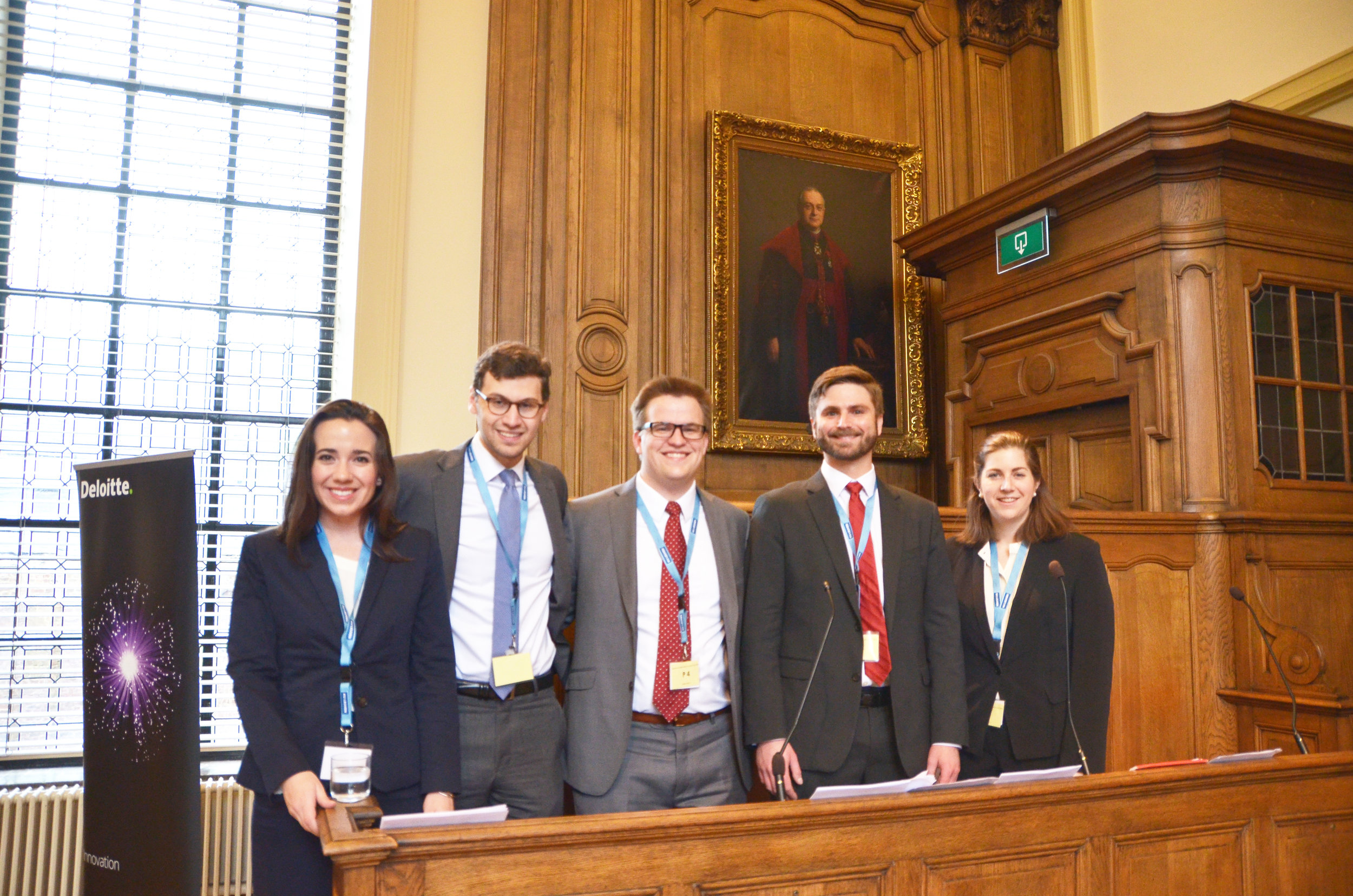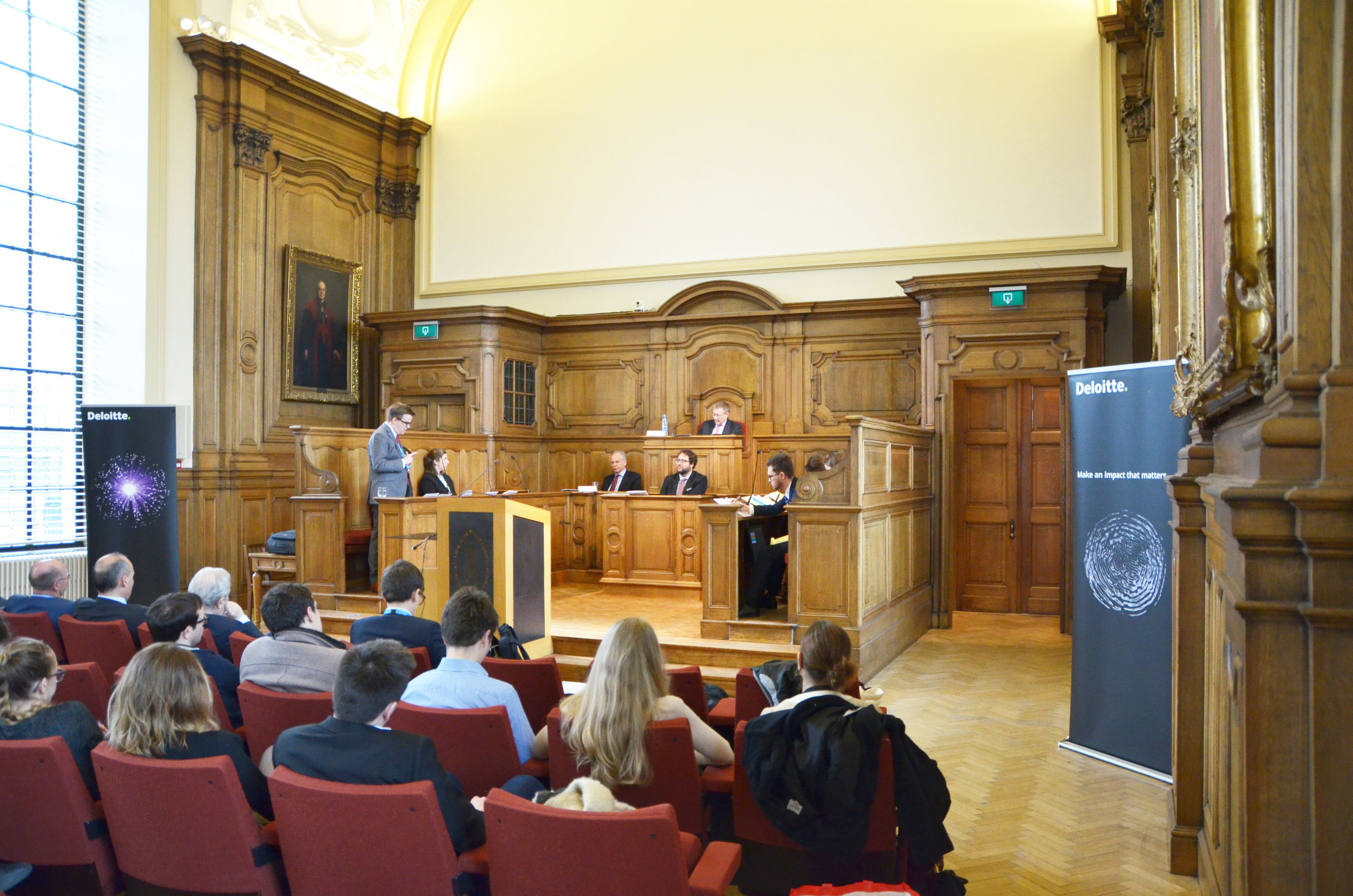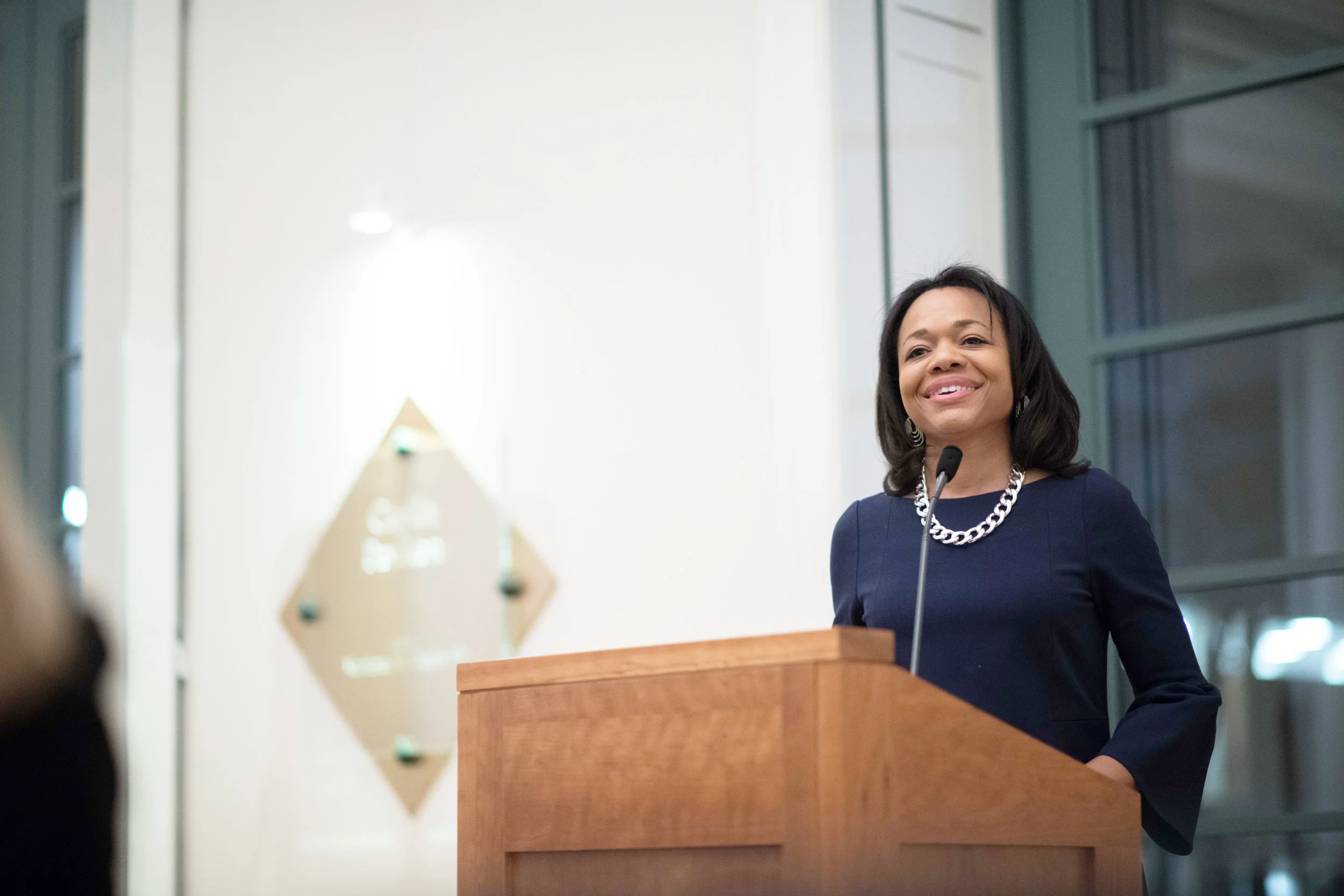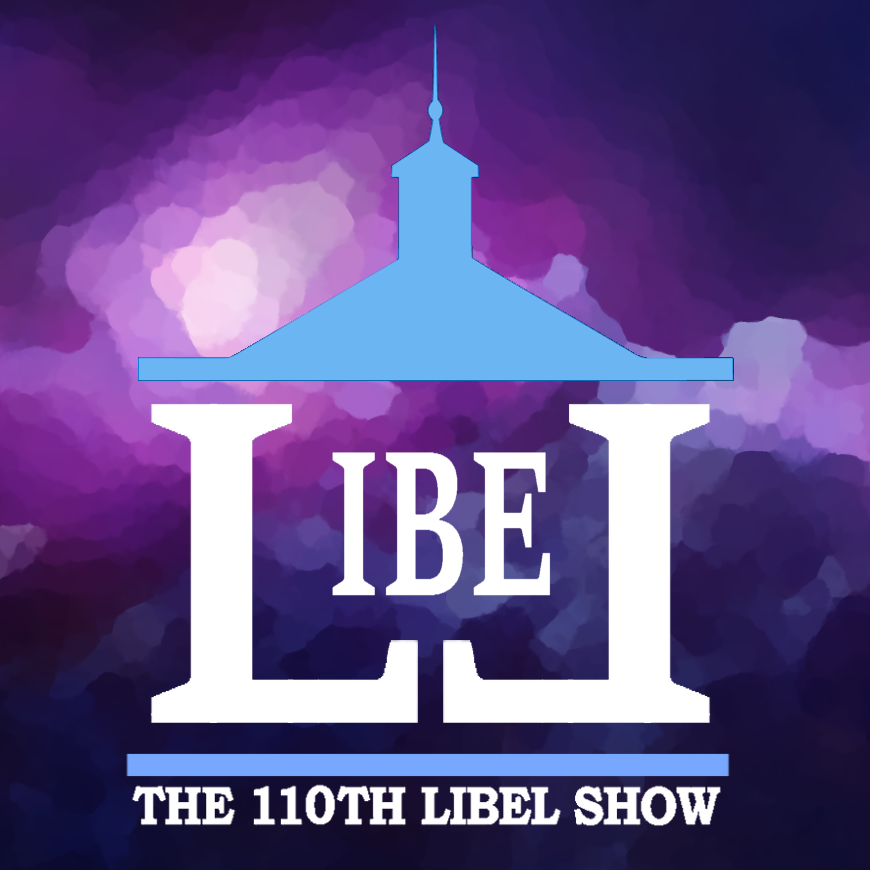Shortz: Hello
Goldman: Hi, Mr. Shortz?
Shortz: Hi
Goldman: Hi, this is Jenna
Shortz: Hey there, how are you doing?
Goldman: Good, how are you?
Shortz: Excellent
Goldman: Good, well thank you so much for granting us this interview for the Virginia Law Weekly! We are so excited!
Shortz: That’s nice, thank you. Is it still in print or is it only online now?
Goldman: It is, we are still in print every week! In fact, I’d say print is what we focus on. Our website, we need a little work. Do you mind if I record our interview?
Shortz: Feel free.
Goldman: Thank you so much for the time and um, and yeah, we are so excited to talk to you. Um, so kind of what precipitated this was just thinking about being journalists and editors and how obsessed we are with words and kind of how that’s the crux of the law is too, it’s the arrangement and collection of words and how so many cases turn on words, and we thought wow, it would be great to interview Will Shortz about words! So that’s where I thought the starting point of this interview could be.
Shortz: Nice, it’s a subject I think a lot about. And I think well there are lots, even though I never practiced law, I am very happy to have gone through law school at UVa because its good training for the mind and was good training for using words precisely.
Goldman: Oh absolutely, so where did your interest in words and word puzzles specifically come from?
Shortz: Well my mother was a writer, so I think I got my love of words from her. No one in my family did puzzles; I picked that up myself. I’m interested in all kinds of puzzles, not just word ones, but ones with numbers, logic, mystery puzzles, virtually any kind. But crosswords are obviously a major form of puzzles and I love word puzzles of all sorts.
Goldman: Great. So what would you say is the hallmark of a good word? Or when you come across a word and think oh, that’s something I have to use in my next puzzle?
Shortz: Well it doesn’t work that way; let’s talk about the New York Times. I don’t make the puzzles, they are made by, they are submitted by contributors, and I get 75 to 100 puzzles a week submitted to me, so the biggest part of the job is actually looking at the submissions and deciding which ones are the best, which ones I like the most, and everyone gets a response: yes or no.
When I look at the vocabulary and the grids I’m looking for fresh, colorful vocabulary that is generally familiar to New York Times readers. That doesn’t mean everything has to be simplistic, I like an interesting, difficult word sometimes but I want, generally speaking, I want familiar vocabulary. And when I look at a submission, I mark up, I ask for submissions on paper; then I mark them up with things that I like and don’t like. Once I’m done marking them up I look at the grid as a whole and I decide if I think its good enough, if I think it’s interesting enough.
Let’s see, we have a puzzle coming up, I’m looking at one for January 27 and this is some of the great vocabulary it has: It has ‘mid-march’ and my clue for that is ‘when St. Patrick’s day is celebrated.’ It has Marie Curie, and the clue for that is ‘the first two-time Nobelist.” It has ‘orange soda,’ ‘Zynga’: the game company. That’s great, its modern, its lively, its colorful, its something that wouldn’t have appeared in a puzzle ten years ago, so that’s nice. We have ‘trashmouth’ that will be a debut in the New York Times crossword. Its “one spewing obscenities.”
We have clam juice, which is an ingredient in a Caesar cocktail. Think young, ‘beer gut,’ so some other things ‘errata page’ and ‘team events.’ That’s a lot of great colorful, fresh vocabulary.
Then I look at the minuses in this puzzle, there’s not many—there’s the word ‘heme’ it is a deep red pigment, as in the color of blood. It is an ok word, I consider it a minus in the puzzle, it tracks, but it’s ok because there’s so much great stuff. You just try to end up with a great balance of vocabulary, so that’s an example.
Goldman: So you would say the minus for that word is just that its just not quite as familiar?
Shortz: Its not just that it’s not familiar, that’s part of it, it’s just not very interesting. It’s a short word with two Es in it, its kind of a crosswordy-word. It’s an example of crossword-ese. Crossword-ese is vocabulary that people know mainly from crosswords, not from real life. I suppose if you’re a doctor you might know ‘heme’ but most people aren’t going to know that and unfortunately that word is not real common in crosswords because its so obscure. I’m looking it up in the database now to see how many times that word has appeared. It has appeared six times in my years at the Times, always clued at blood pigment, pigment in red blood cells, and myoglobin component. I don’t know. It’s not a very interesting word, whereas ‘trashmouth’ that’s an interesting word.
Goldman: Oh absolutely! So you have been writing and editing puzzles for about 40 years--
Shortz: My whole life, when I graduated from law school I went right into puzzles. I was an editor for Penny Press Puzzle Magazines for 7 months, then I went to Games Magazine for 15 years, and now I’ve been at the New York Times since 1993.
Goldman: Wow, I was reading your commencement address for the class of 2016 that you planned on going into law for a few years then pursue your passion in puzzles. At what point in your first year did you decide to go straight for this dream career?
Shortz: Right, well the summer before I started at UVa, after I graduated from Indiana University and before starting law school I spent a summer at Penny Press Puzzle Magazine in Connecticut as an intern. That let me see how I could have a career in puzzles without living in abject poverty. Creating puzzles, generally speaking, cross word puzzles don’t pay very well, with rare exceptions. So I originally didn’t think I could have a career in puzzles and think I could live, but once I saw that I could be a crossword editor as a job and so that made it doable. I don’t know if you have read the story, I wrote my parents a long, handwritten note every week and in the Spring of my first year at UVa, near the end of the letter I told my parents I would be dropping out of UVa at the end of the year and go right into puzzles. And you could imagine how that news went over. My mom wrote a very nice, thoughtful response on what a terrible idea but said it was your decision, basically. And I thought she made good points, so I went through, I went ahead and got my J.D. and then went into puzzles.
Goldman: Was there any kind of surprising ways you’ve used that legal education since? Either in puzzle making or in your table tennis center ownership?
Shortz: Lots of ways. I would say in generally I think a legal education is just a great education for the world. It teaches you to handle complex problems, divide them into their constituent parts, and deal with each part individually. The law school teaches you how to use your mind and it also teaches you precise use of language, which is talked about. And besides that, I’m the author and editor of over 500 puzzle books and I’ve never had an agent or used a lawyer. I look at and analyze my own contracts so I feel that my law school background qualifies or enables me to do that. Once I decided at UVa I wasn’t going to go into law I was free to study anything I wanted. So I took one course, I took a couple of courses on intellectual property and wrote a paper on copyright protection for puzzle games. So that’s, I think as far as puzzle purposes go, I know copyright law better than anybody.
Goldman: That’s definitely one for the books. Do you have any advice for students or even lawyers who want to pursue that ‘dream job’ like you did, either right out of law school or after a law career?
Shortz: Right, well I think most people who go to UVa’s law school are going to become lawyers, and that’s great. It would be great to pick a field of law you enjoy. If I had gone into law I probably would have done intellectual property. Pick a part of law you enjoy, but it’s a great all around education, it teaches you how the world operates, so I think it’s a good background who want to go into business.
Goldman: I know I’ve thought about it, especially working with the Law Weekly, I’m really interested in journalism and that was something that was pretty surprising.
Shortz: Interesting, there are all sorts of jobs that combine law and legal expertise and something else. So you could be the legal expert for NBC or any media company.
Goldman: Well I’m a big fan of Nina Totenberg, so maybe if she retires one day. So do you have any advice for law students who just want to be better wordsmiths? Who want to practice law but want to improve their vocabulary and improve their choice of words?
Shortz: Well, I mean solving the New York Times crossword is going to be valuable because crosswords puzzles touch every aspect of life and they connect you with things you wouldn’t necessarily explore on your own. The weekly crossword has on average 76 answers covering 76 different topics. If you come up to a word you don’t know you can figure it out from the crossing letters. It’s a way of acquainting yourself with all things in the world you wouldn’t necessarily come into contact with. So I think the Times crossword especially is good training for the mind and a good teaching tool. But you shouldn’t do the puzzle because you think its good for you because that’s a bore. No one is going to keep doing that. You should do it and you should enjoy it. Here’s the thing, you should do crosswords for their entertainment value and the nice thing about it is that there are lots of things in life that are entertaining: crosswords are good for you.
Goldman: Right! So you have lots of fans at the Law Weekly and we are totally in awe, and this is a quote from one of the people on my staff, “turning a boring old law degree into a career that is fun and interesting.” So, there are a bunch of questions that my board wanted me to ask you and first was: When were you first inspired by the word ‘ecru.’
Shortz: (laughs) Well that’s an example of crosswordese, though I don’t think that’s as bad as heme because ecru is a word that comes up in real life. It’s a shade of hose or linen or other things. So I’ve seen ‘ecru’ outside the puzzle word. Let’s see, I’ve used the word 159 times in the Times crossword since I started in ’93 and the clue is something like “brown, stocking shade, like a decorator shade, neutral hue” or something like that.
Goldman: Well I had to look it up. Was there ever a time that you made a mistake and the puzzle went totally ary? Or have you being doing this for so long that you never make mistakes?
Shortz: Well mistakes do occur occasionally. There are more than 30,000 clues in the New York Times crossword each year, and occasion an error will creep in. That’s usually slight. I can’t even feel bad about this one: It was ‘the only NFL team to go 0 and 16 for a season.’ And the answer was ‘Lions’ and the puzzle was put to bed on December 30 for publication on January 7 and over that weekend, literally two days later, the Cleveland Browns completed their season 0 and 16. So the clue was correct when the puzzle was put to bed, but by the time the puzzle appeared in print it was wrong. Of course a lot of people follow NFL so I heard a lot about that.
Besides that, we are talking about precision of language, I can give you some examples of maybe language I used that was not as good, well here’s an example: A clue last year ‘1996 horror movie with four sequels’ the answer was ‘Scream.’ The problem was that there were 4 Scream films in total, but only three sequels. Of course the first one wasn’t a sequel. So that’s an example of precision of language, or where language wasn’t used precisely.
Let me find another example of language used, there’s factual things once and a while. My clue was: Head of state who resigned in 1974 and the answer was ‘Meir,’ as in Golda, as in Prime Minister Gold Meir. In Israel she is the head of government but she’s not the head of state, that’s the President. We tend to overlook that distinction in the United States because our President is both head of government and head of state, but in any country that has a Prime Minister those two things are separate. So that’s an example of a word I used wrongly.
Goldman: Well that’s fascinating; I guess that reminds us to do as diligent research as we can as lawyers. But that’s a pretty obscure one. So the Law Weekly publishes Sudoku puzzles, and we have toyed, every so often we create our own crossword puzzle but every time we create them we receive such fiery backlash and we are getting pretty upset about it. Do you have any favorite angry letters you’ve received about your puzzles?
Shortz: Yeah, lets see there was, let me think about that. Usually I get a lot of letters, but now there are crossword blogs and people can post their comments online so I don’t get quite as many letters. So let me look up the clue, there are crossword blogs so people who are into this can post their comments online so I don’t get many letters. Here’s an example: The answer was ‘toad’ and the clue was ‘little hopper’ and a guy wrote in saying ‘toads, sir, waddle, they do not hop.’
Goldman: (laughs)—that’s a good one.
Shortz: The sorts of people who are drawn to crosswords tend to be persnickety and care a lot about language. So if they think I have used words wrongly they let me know.
Goldman: That leads into my next question someone on the board had: Why do you sometimes allow ‘eerie’ to be spelled with a y as in ‘eery’ in a crossword, and further, why do you allow the extra E at all, because we are a bunch of law students fresh off learning about the Erie Doctrine in Civil Procedure which is spelled ‘Erie.’
Shortz: Well ‘Erie’ appears in crosswords all the time. You’re asking about ‘eery’ and I accept any word that is in the dictionary that is a variant. Eery is a variant of Eerie in Webster’s third new International or Webster’s Second new International dictionary. I’ve allowed the word 18 times in the Times crossword. That one hasn’t appeared since 2012, in years before it would be a minus, now that would be a big minus. I don’t like ‘eery’ spelled that way, it’s something you hardly ever see. I hate variant spellings. But if you have a fantastic puzzle, a wonderful interlock, and the whole thing hinges on ‘eery,’ as an editor you are liable to say ‘Ok, I’ll allow it.’
Goldman: So this one is totally off of left filed: “In the inevitable Batman reboot, do you have any plans to reprise your role as the Riddler?”
Shortz: (laughs) If they were to ask me, yeah, but they haven’t asked. It’s funny how they came about, they were already filming Batman Forever, they wanted two riddles, and they realized none of their screenwriters could write riddles. One of the screenwriters hears me on NPR on Sunday Morning doing puzzles so they called me to ask me to write four riddles. Each riddle had to contain a number, that was the one constraint, each riddle had to contain a number. So I will tell you, last month I filmed an episode of Brooklyn 99. They mention me and the crossword occasionally on the show so they invited me to film last month and it will air on March 20.
Goldman: Do you have any favorite spotlight or interviews or times you’ve been featured?
Shortz: Well there is a movie largely about me, I don’t know if you’ve seen it called ‘Wordplay.’ It’s a documentary from 2006, and at the time it came out it was among one of the top 25 highest grossing documentaries of all time. It has since slipped because there have been more films since then. I’ve also been on 60 minutes, Oprah, Nightline, the Daily Show with Jon Stewart, which was really wonderful I was very impressed by him. I was on Letterman when he was on.
Goldman: Wow, well that’s great. You really have had such a prolific career. So I guess my last couple questions were, if you were graduating from UVa Law in 2018, how would your plans be different? Would they be different?
Shortz: No, my plans would not be different. I’m a very lucky person to have landed in the job I have. It’s not just luck, I worked to get here, I did the right things but it was sort of unplanned. I never thought I would be the New York Times Crossword Editor; it sort of came about naturally. I wouldn’t change any part of my life actually.
Goldman: That’s great to hear, I guess really my last question is how have you, have you seen any significant changes in crossword puzzles or in language in general from the time you started to now? That’s a big question.
Shortz: Crosswords have changed as our culture and language have changed. I’d say, first of all there are modern words that come up all the time and many go in crosswords. I’d say there’s, I will say two things. First of all, before me, before I started in 1993 at the Times, commercial names were not allowed in the crossword. I thought that was ridiculous, commercial names and brand names are part of life and the crossword should reflect life. That was a decision I made right at the start. Another thing I will tell you is that there has been a loosening of language. When I started in 1993 I thought about using the word ‘anal’ in the puzzle and I think the clue was ‘retentive’ or something. I was cautioned not to use that, that it was an unpleasant word, maybe somewhat vulgar. So I didn’t do it, I took it out. But since then I think language and things have loosened, so I don’t like ‘anal’ in the puzzle but it’s ok.
In the last couple of years I started allowing ‘arse.’ In the New York Times Style book they say “do not use the word ‘ass’ for the part of the body.” Of course ‘arse’ is the real end, but a little more prettified, it’s the British word for the rear end. So, I’ve allowed that. I figured as language and the culture have loosened, the crossword should change as well.
Goldman: Do you have a favorite new word that you have come about recently?
Shortz: I will tell you my all time favorite word, it’s ‘ucalegon,’ it’s not a new one. It means a ‘neighbor whose house is on fire.’
Goldman: Oh my gosh, that is very specific!
Shortz: It is very specific; it doesn’t come up much in real life. It comes from a Greek myth where there was a man named Ucalegon, either his neighbor’s house was on fire or his house was on fire, I don’t know. It comes from mythology. Anyway, it’s just a ridiculously specific word and that’s why I love it.
Goldman: Well that’s great, I’m going to try to use that word in something soon.
Shortz: Well I hope it doesn’t come up naturally!
Goldman: Right, well maybe writing some hypothetical, that might be a good one for law professors, I will have to propose that. Well thank you so much, I guess, my final question is, I would be remiss if I didn’t ask you to write the Virginia Law Weekly a special puzzle.
Shortz: That is tough, that’s tough, it’s a matter of time and this is my fulltime job, I am directing the American Crossword Puzzle Tournament in two weeks. If there is a puzzle you would want to reprint from a tournament I could give you that, but you should really have something law related. I don’t think I can think of anything off the top of my head.
Goldman: We will spend the rest of the semester working on something really good and then we can submit it, how about that?
Shortz: Sounds good.
Goldman: Well thank you so much, this has really been a pleasure. I’m a big fan and I’ve listened to you every Sunday for as long as I can remember on Morning Edition to your puzzles.
Shortz: Thank you
Goldman: Thank you so much and have a great rest of your day.
Shortz: You too, thanks for calling.
Goldman: Bye.























